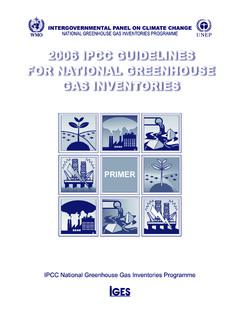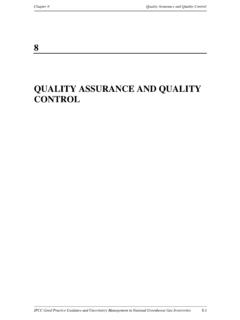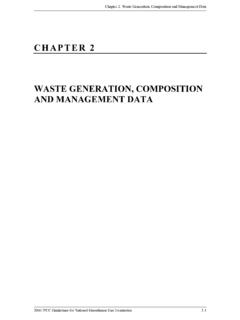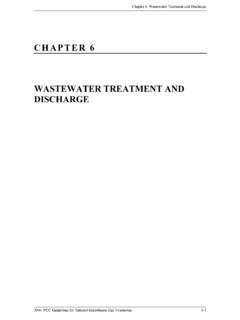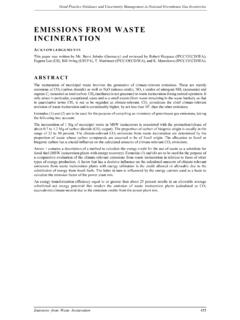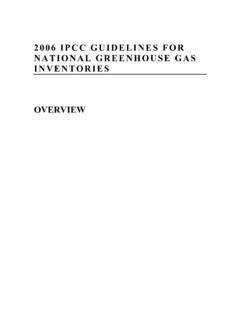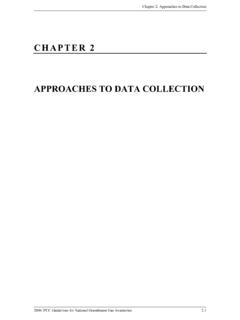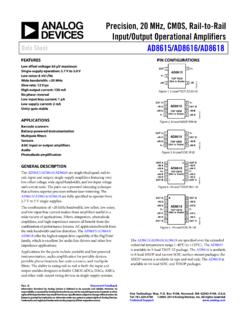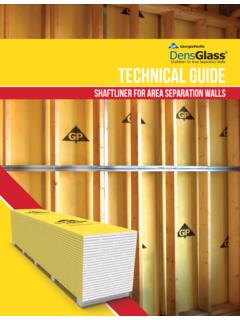Transcription of 3.1 CO2 Cement Production - IGES
1 Good Practice Guidance and Uncertainty Management in National Greenhouse Gas Inventories CO2 Emissions from Cement Production 175175CO2 EMISSIONS FROM Cement Production ACKNOWLEDGEMENTS This paper was written by Michael J. Gibbs, Peter Soyka and David Conneely (ICF Incorporated). It was reviewed by Dina Kruger (USEPA). ABSTRACT Cement is an important construction ingredient produced in virtually all countries. Carbon dioxide (CO2) is a by-product of a chemical conversion process used in the Production of clinker, a component of Cement , in which limestone (CaCO3) is converted to lime (CaO).
2 CO2 is also emitted during Cement Production by fossil fuel combustion and is accounted for elsewhere. However, the CO2 from fossil fuels is accounted for elsewhere in emission estimates for fossil fuels. The Revised 1996 IPCC Guidelines for National Greenhouse Gas Inventories (IPCC Guidelines) provide a general approach to estimate CO2 emissions from clinker Production , in which the amount of clinker produced is multiplied by the clinker emission factor. The IPCC Guidelines recommend two possible methods for calculating the clinker emission factor.
3 The first method is to use the IPCC default value for the fraction of lime in clinker. The second method is to calculate the average lime concentration in clinker by collecting data on clinker Production and lime fraction by type. The IPCC Guidelines state that the difference between the default value and a value based on collected data is expected to be small. If clinker Production data are not available, it is recommended that countries back-calculate clinker Production from the Cement data while applying a correction factor for clinker imports/exports.
4 Once an estimate has been derived, emissions can be estimated by means of the clinker emission factor. The IPCC recommends using clinker data, rather than Cement data, to estimate CO2 emissions because CO2 is emitted during clinker Production and not during Cement Production . If clinker is traded internationally, using Cement Production data results in a biased emissions estimate because the Cement could potentially be produced from clinker that was made in another country. Although clinker data are the preferred data source, Cement data may be more readily available in some countries.
5 In this case, the recommended approach is to estimate the fraction of clinker in the Cement and back-calculate clinker Production . Quality assurance and quality control activities should be implemented at several stages in the emission estimation process. At the plant level, key activities include internal quality control on Production data and emission factors, as well as documenting data and methods for reviewers. The inventory agency must ensure the accuracy of plant submissions as well as the compiled inventory.
6 It is also responsible for providing documentation and sufficient information to the United Nations Framework Convention on Climate Change (UNFCCC). One or more types of external review may also be appropriate. Background Paper Industrial Processes Sector 1761 INTRODUCTION Nature, magnitude, and distribution of source Overview of Cement Production Cement is an important construction ingredient around the world, and as a result, Cement Production is a significant source of global carbon dioxide (CO2 ) emissions, making up approximately percent of global CO2 emissions from industrial and energy sources (Marland et al.)
7 , 1989). Cement is produced in large, capital-intensive Production plants generally located near limestone quarries or other raw carbonate mineral sources as these sources are the principal raw materials used in the Cement Production process. Because the Production plants are expensive, the number of plants in a country is generally limited (less than 100). Carbon dioxide is emitted as a by-product of clinker Production , an intermediate product in Cement manufacture, in which calcium carbonate (CaCO3) is calcinated and converted to lime (CaO), the primary component of Cement .
8 CO2 is also emitted during Cement Production by fossil fuel combustion. However, the CO2 from fossil fuels is specifically accounted for in emission estimates for fossil fuels. Process Description Carbon dioxide is released during the Production of clinker, a component of Cement , in which calcium carbonate (CaCO3) is heated in a rotary kiln to induce a series of complex chemical reactions (IPCC Guidelines). Specifically, CO2 is released as a by-product during calcination, which occurs in the upper, cooler end of the kiln, or a precalciner, at temperatures of 600-900 C, and results in the conversion of carbonates to oxides.
9 The simplified stoichiometric relationship is as follows: CaCO3 + heat CaO + CO2 At higher temperatures in the lower end of the kiln, the lime (CaO) reacts with silica, aluminum and iron-containing materials to produce minerals in the clinker, an intermediate product of Cement manufacture. The clinker is then removed from the kiln to cool, ground to a fine powder, and mixed with a small fraction (about five percent) of gypsum to create the most common form of Cement known as Portland Cement .
10 Masonry Cement is generally the second most common form of Cement . Because masonry Cement requires more lime than Portland Cement , masonry Cement generally results in additional CO2 emissions. 2 METHODOLOGICAL ISSUES Selection of good practice methods The IPCC Guidelines provide a general approach to estimate CO2 emissions from clinker Production , in which the amount of clinker produced is multiplied by an emission factor. Thus the basic equation to estimate CO2 emissions from clinker Production is: EQUATION 1 Activity/ Production Data CKD Corrections Factor = CO2 Emissions from Clinker Where CKD stands for Cement Kiln Dust.
